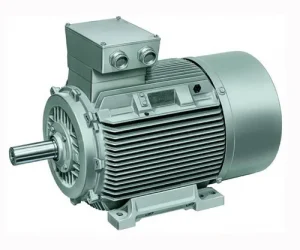Project Report For Electric Motor
Introduction
Project Report for Electric Motor is as Follows.
An apparatus that transforms electrical energy into mechanical energy is a motor. The majority of electric motors produce force in the form of torque by coupling the electrical current flowing through a wrapped wire with the magnetic field of the motor.
Electric motors can be powered by alternating current (AC) sources such as the power grid, generators, or inverters, or by direct current (DC) sources such as batteries or rectifiers. Concerns such as the kind of power source, the application, the construction, and the sort of movement output may be used to categorise electric motors. They can be radial flux or axial, brushless or brushed, three-phase, two-phase, or single-phase, and they can be cooled by liquid or by air.
Standardised motors provide sufficient mechanical energy for use in industry. Blowers and pumps, commercial fans, power tools, home appliances, disc drives, and automobiles are just a few examples of the applications. Electrical watches have tiny motors. Electric motors can be used in reverse as generators to recover power that could otherwise be wasted as heat and friction in specific applications, such as regenerative braking in traction motors.
The two mechanical components of an electric motor are the rotor, which is movable, and the stator, which is fixed. A magnetic circuit is made up of two electrical components: a pair of magnets, each coupled to the stator and rotor by an armature.
A magnetic field is created by field magnets and it travels through the winding. These might be electromagnets or permanent magnets. Other motor types have the winding on the rotor and the field magnet on the stator instead of the other way around.

Uses Of Electric Motor
Electric motors are employed in a range of sectors for a variety of reasons, the most important of which being that they have a longer lifespan than, example, fossil fuel engines and offer a greener option.
Conveyor systems, which are commonly seen in factories and warehouses, employ AC motors to assure reliable and consistent delivery. Another application for them is in air conditioning systems. Because brushless AC motors are naturally dependable, they need extremely minimal maintenance.
Due to its durability and strength, DC motors are used in mission-critical applications like railway wiper systems because they can move greater weights and perform effectively in a range of circumstances. Similar to other motors, these types are also present in smaller appliances like vacuum cleaners and may be modified to meet the needs of the application.
Get Completely Custom Bankable Project Report
Market Potential Of Electric Motor
The market for electric motors is expected to grow at a CAGR of 6.8%, from an estimated 134.0 billion dollars in 2022 to 186.0 billion dollars in 2027.
The main factors driving the electric motor market are the rising demand for HVAC systems among residential, commercial, and industrial end users as well as the rising need for electric motors in manufacturing industries. The growing building industry in India is a supporter of the electric motor business there.
The country’s three largest markets for electric motors are Gujarat, Maharashtra, and Madhya Pradesh. These states have been extremely important in driving market revenue. The market is further stimulated by the expansion of government programmes throughout the projection period, including the Green Energy Corridor in Gujarat, Maharashtra, and Madhya Pradesh.
An electric motor is a mechanical device that converts electrical energy into mechanical energy. Most modern electrical motors generate force in the form of torque sent to the motor’s shaft by interacting between the motor’s magnetic field and electric current in a wire winding. These motors are most commonly used in the industrial, agricultural, and automotive sectors. However, as technology and urbanisation improve, demand for motors has increased in the commercial and residential sectors.
Furthermore, air conditioning and heating (HVAC) sectors have emerged as the quickest-growing motor deployment sectors. The expanding use of the product across several sectors is what is driving the India electric motor market. The market is also being helped along by an increase in construction activity across. Additionally, the government’s shifting emphasis on the use of energy-efficient motors is promoting market expansion.

